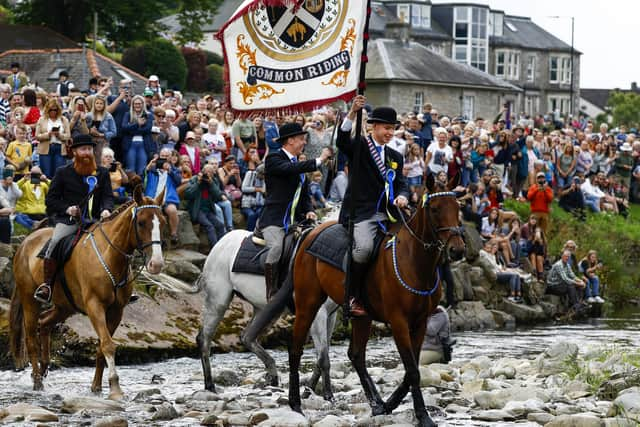Book review: The Hot Trod, by John Sadler
“Hot trod: (Scott) the pursuit of moss-troopers.” – Chambers Dictionary
John Sadler’s fascinating historical and topographical survey of the Anglo-Scottish Border Is not restricted to the violent and often criminal activities of the Reivers either side of the old Border, though he does full justice to their tangled and bloody history which, happily transmitted to us by way of the Ballads and minstrelsy of the Border, nevertheless makes the criminal history of America’s Wild West look like tame stuff. He ranges further back in time, to pagan gods and the Roman occupation of the North of England, to the full-scale Anglo-Scottish Wars of Scottish Independence and English would-be imperialism, relating for instance what many of us Scots have often been happy to ignore or forget: that is, the frequency of Scottish raids and ravages south of the Border, at least as far as York.
Advertisement
Hide AdSadler, an Anglo-Scot, born and bred in Northumberland, is a wonderful guide to the Border country. He seems to know, and vividly describes, every road, hill and valley, moss and marsh, town, pasture and wilderness. His book rambles here and there, up and down through the centuries, as unstructured as good conversation. With considerable dexterity, he mostly contrives to maintain an awareness of the national grand-political questions while giving vivid and usually bloodthirsty accounts of small-scale raids and incursions either side of the Border. He is as assured in his treatment of the few major battles, notably of course Flodden, as he is able to describe what were no more than cattle raids – though raids that had a bloody outcome.


Anyone who has read Alistair Moffat’s history of the Reivers or George Macdonald Fraser’s now classic work The Steel Bonnets will want to add this book to their shelves. Sadler, one should say, is a master of the difficult art of enabling you to see a building or a landscape in the mind’s eye. In short, the book is wonderfully rich. Having lived 40 years in the Borders, I was made aware time and again of my ignorance and therefore happy to be granted the chance of improving my knowledge of country and people. That said, there is the occasional regrettable omission; no mention for instance of the story of Fletcher’s dramatic return to Selkirk, the only survivor of the 80 men who had set off from the burgh for Flodden. Still, one of the many merits of this book for a Scot is that it makes us aware of so much on the other side of the Border of which we are or have been ignorant, often wilfully.
The passage of time lends glamour and charm to much that was brutal and horrid, all the more so when memories of men and battles have been preserved in memorable verse and prose. Sadler recognizes the horrors of Border history, but the reiving devils have so many of the best lines and songs, and he revels in their exploits and – yes – crimes.
The Union of the Crowns in 1603 led surprisingly quickly to the pacification of the Borders. Weapons were hung in the hall and war was studied no more, though daring spirits would come to find opportunities in the British Empire. James VI & I contrived to clear the country of many of its most violent folk, shipping them off to farm in Ulster, whence many headed to the Americas. After the Civil Wars of the 17th century there was peace in what had so long been a war zone. Sadler observes that in the ’45 the Borderers had no interest in the Jacobites. Today, meanwhile, the Borders, both East and West, unlike other parts of Scotland, are represented at Westminster by Unionists, not Nationalists.
This book deserves a wide readership; it is written with such enthusiasm and knowledge. You may not read it from beginning to end, for there is no compelling narrative drive. But once you have tasted it, you will return for more, dipping in here and there, and being instructed and delighted. The index is inadequate, but in general the publishers have done Mr Sadler well; there are some excellent photographs, too. Someone should however have their knuckles rapped: a well-known quotation from Robert Louis Stevenson, printed as an epigraph, has his name given the English form: “ph” instead of “v”. Shocking.
John Sadler: The Hot Trod, Amberley, 319pp, £22.99